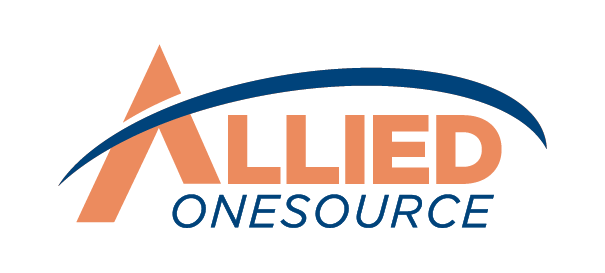Driving Business Stability Through Strategic Portfolio Management
Every company faces a common challenge: juggling multiple projects while keeping track of workers, budgets, and deadlines. Imagine running a manufacturing plant where you need to:
- Launch a new product line, but you're short on skilled workers
- Update old equipment, but you're unsure if you have enough budget
- Train new staff, while keeping current production on schedule
This is where strategic portfolio management comes in. Think of it as your business command center - a systematic way to see all your projects, resources, and challenges in one place. Instead of putting out fires as they happen, portfolio management helps you spot potential problems early and make smarter decisions about where to put your time, money, and people.
What is Portfolio Management?
Strategic portfolio management gives businesses a clear view of their entire operation. This management approach combines projects, resources, and investments into one organized system that guides decision-making and planning.
Companies use different tools to manage their portfolios:
- Digital dashboards with real-time updates
- Project management software (Microsoft Project, Asio)
- Collaborative spreadsheets and documents
- Analytics reports
Project managers or department heads typically lead portfolio management, working closely with HR, finance, and operations teams. A complete portfolio contains:
- Active and planned projects
- Staff availability and skill sets
- Budget allocations and expenses
- Project schedules and milestones
- Key performance indicators
Consider a company taking on three major initiatives: implementing new software, conducting employee training, and expanding into new territories. Their portfolio reveals the workforce needed for each project, required skill sets, timeline demands, and resource availability. This overview helps them allocate staff effectively and ensure each project has the support needed for success.
Companies approach portfolio management differently based on their needs. Some take an active approach, constantly adjusting projects and resources to maximize results. Others prefer a more stable strategy, setting up long-term plans and making minimal changes. You might also choose between managing everything in-house or bringing in experts to help make decisions about resource allocation and project priorities.
How Portfolio Management Contributes to a Stable Business
Ever approved a project only to realize you don't have enough staff to complete it? Or discovered too late that three major deadlines clash? These situations don't just cause stress – they cost money, delay progress, and can damage client relationships.
The Project Management Institute found that 94 percent of organizations with advanced project management skills improved significantly after using portfolio management strategies.¹ This is why having well-developed practices can be a key factor for success.
Let's explore how portfolio management brings stability to your business through better project oversight, smarter resource use, and early risk detection.
1. See Which Projects Actually Matter
Portfolio management eliminates guesswork by showing you which projects truly support your business goals. Instead of spreading your workforce thin across multiple projects, you'll know exactly which initiatives deserve priority. This clear view helps you focus your team's efforts on work that drives real results.
Say you're managing several projects: a critical data migration to the cloud, a cybersecurity upgrade, and developing an internal chat application. Portfolio management helps you see that while the chat app would be useful, your data migration is running smoothly and your cybersecurity project needs more attention.
Now, you can put the chat app on hold and move your skilled team members to strengthen your security – focusing resources where they matter most.
2. Get the Most From Your Team and Budget
Portfolio management shows you exactly where your money and workforce are going. You'll spot when teams are overloaded or underused, and when project costs are eating too much of your budget. This clear picture helps you distribute your resources where they make the biggest impact.
Let's say you have three teams working on different projects. Your portfolio reveals that your IT team is stretched thin handling system maintenance and a new software rollout, while your marketing team has the capacity for more work.
Instead of immediately hiring more IT staff, you might discover you can shift some routine tasks to other teams or identify which projects can be rescheduled - saving you from unnecessary hiring costs while keeping your critical projects on track.
3. Spot Problems Before They Derail Your Projects
A well-maintained portfolio acts as your early warning system. You'll notice potential roadblocks, skill gaps, and resource shortages before they turn into major problems that delay projects or drive up costs. Effective risk management through your portfolio helps you stay ahead of issues instead of constantly putting out fires.
Picture this: you're overseeing a major system upgrade scheduled for next quarter. Your portfolio flags two of your senior developers have upcoming vacation time, and three projects will need specialized coding work during the same period. Now, instead of scrambling at the last minute, you can plan ahead - whether that means adjusting project timelines, bringing in temporary tech talent, or training current employees to fill the gaps.
4. See the Big Picture to Make Smarter Choices
Having all your project information in one place transforms how you make business decisions. You'll see how each project fits into your overall goals, helping you align your teams and resources with what matters most. Instead of relying on gut feelings or outdated reports, you'll have current data showing exactly what your teams need, when they need it, and how long they'll need it for.
Take staffing decisions, for example. When a new project lands on your desk, your portfolio immediately shows you if your current team can handle the workload. You can see which employees have the right skills, who's available in the coming months, and whether you need temporary support or a full-time hire. This means no more over-hiring during busy periods or scrambling to find talent at the last minute.
5. Track Success With Clear Numbers
Modern portfolio management software gives you instant access to the metrics that matter. Instead of digging through multiple reports, you'll see key performance indicators like project completion rates, team utilization rates, and budget accuracy – all in one place.
Say your monthly reports show three delayed projects from different teams. Your portfolio reveals the common thread: these teams handle 40 percent more tasks than others. Armed with these numbers, you can immediately balance workloads or bring in additional staff before other projects face the same fate.
You're not just tracking numbers – you're using them to keep projects running smoothly, teams productive, and deadlines on target. When you can see exactly how your teams are performing, you can make quick decisions that keep your business moving forward.
Let's record all your success in a portfolio with Allied OneSource
Managing projects, teams, and resources doesn't have to be overwhelming. At
Allied OneSource we provide the talent and solutions you need - from staffing and IT support to managed services and marketing solutions. Our expertise helps you build and maintain the right team for every project, ensuring your portfolio delivers results.
Contact us now to discover how our comprehensive solutions can support your business goals.
Reference
1. Software, Saviom. “10 Benefits of an Effective Project Portfolio Management Strategy.” Resources Library, 8 Apr. 2021, www.saviom.com/blog/understand-10-benefits-of-an-effective-project-portfolio-management-strategy/.










